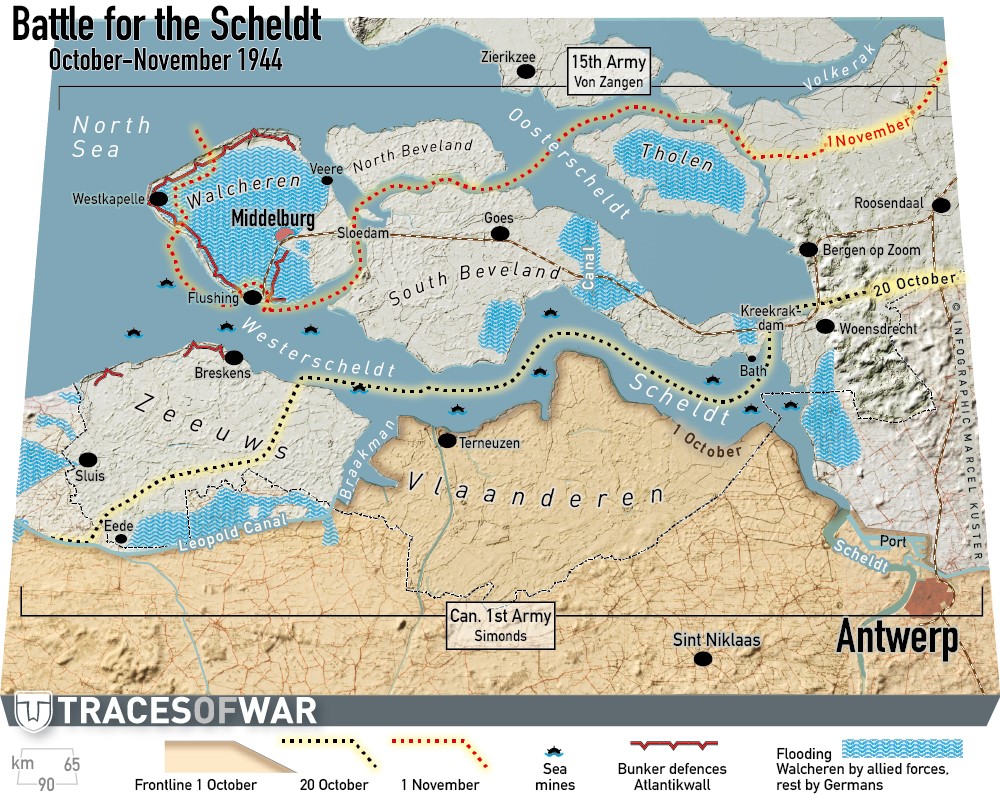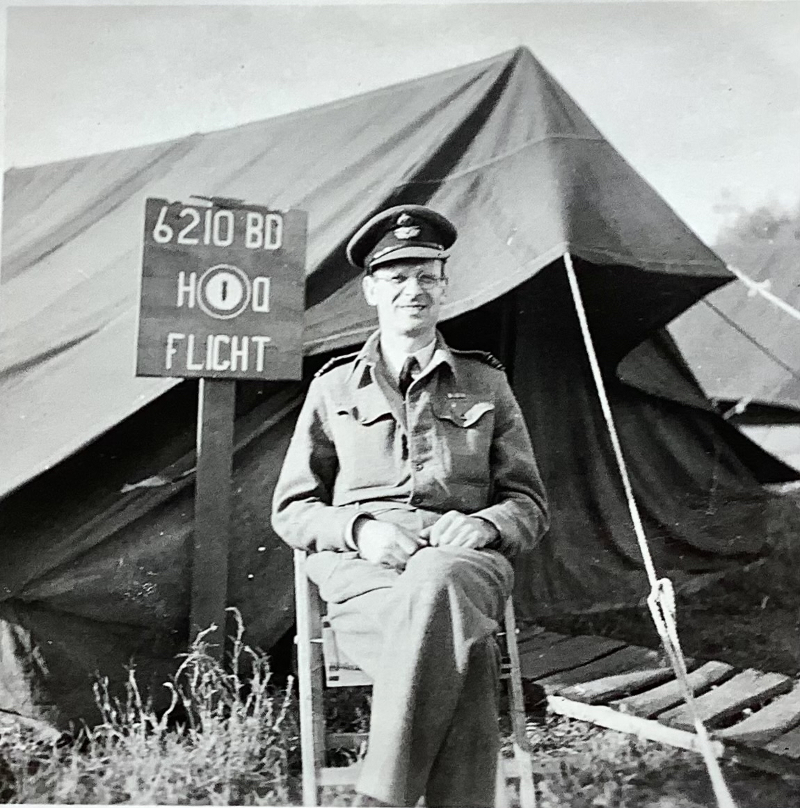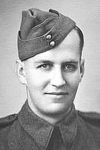For Freedom Museum
The Zwin region, the immediate vicinity of the museum, experienced turbulent times during the Second World War. Especially in 1944 there is a lot of fighting.
The German 7.Armee is defeated at Falaise (Normandy) on 23 August 1944. The Allies break out after a hard battle and the race to the North begins. The German army is pushed before the Allies. On September 3, Brussels is liberated and on September 4, British troops are brought in by the inhabitants of Antwerp with much cheer. The vital port of Antwerp is in Allied hands but cannot be used. Because Walcheren, Zuid-Beveland and Zeeuws Vlaanderen are still in the hands of Germany, no Allied shipping is possible on the Western Scheldt. This requires three operations to take control of the three Dutch territories. The operations are Operation Vitality for South Bevelend, Operation Infatuate for Walcheren and Operation switchback for Zeeuws Vlaanderen. Operation Switchback starts on October 6, 1944 and is carried out by the Canadian 3rd Infantry Division. Zeeuws Vlaanderen has been proclaimed by Hitler as "Schelde Festung Süd", which means that there must be held out to the last man. That task lies with the 64. Infantry Division under General Knutt Eberding. The Canadians call it "The Bresken Pocket". Almost a month of bitter fighting followed in West Zeelandic Flanders and the municipalities north of the Leopold Canal. Operation Switchback was completed on November 3, 1944. The battle for the Western Scheldt is less known to many. The For Freedom Museum devotes extensive attention to this. Especially the battle in the nearby Zwin region is well highlighted. The curator of the museum is Freddy Jones, his partner, and also his brother, Danny Jones. Both are the children of a girl from Duinbergen (Knokke-Heist) and a British soldier who landed on the beaches in Normandy on June 10, 1944. The extensive collection of uniforms and weapons are the property of Freddy.
Despite the fact that much attention is paid to the last phase of the war, attention is also paid to the occupation period from 1940 onwards. Many dioramas give a clear picture of this period. Upon entering, German marching songs sound to emphasize the occupation period. The explanation of the different Dioramas and showcases is detailed. Upon arrival, you can ask for a more detailed description of the various display cases. In many cases personal stories of different soldiers are quoted, both German and Allied.
Local events are also beautifully depicted. As an example the diorama about the horse stable of the farm "de Stelle" where six young German soldiers surrender to Canadians. Furthermore, the air battles over the region are not forgotten and a display case has been set up for the maritime part. You will be guided through different buildings. But when opening one door, watch. The sounds of a fight come to you. This is part of a beautiful diorama that takes place in the Zeeland Flemish village of Het Retranchement.
The last part is three sheds. In one shed is an exhibition of excavated aircraft wrecks of the Belgian Aviation History Association (BAHAAT) and in two sheds are vehicles owned by Patrick Tierssoone.
Finally, you can enjoy a delicious Belgian beer or coffee in the small restaurant to let everything pay off for you. There is also the possibility to buy a souvenir in the small museum shop.
The museum has been set up with a lot of love by the curators and volunteers and is well maintained. The immediate surroundings are quiet and that also radiates to the museum.
Among other items you can find the decorations of Corporal Norman Eugene Tuttle in the museum.
For current visiting hours, please visit the website of the museum.
Do you have more information about this location? Inform us!
Source
- Text: André Nagtegaal
- Photos: Arjan Vrieze
Nearby
Point of interest
- Information Sign Mine Field 114 Odette 712 - Knokke-Heist
- Former Airfield Knokke-Le Zoute (Advanced Landing Ground B-83) - Knokke-Heist
- Major Weylerkazerne Brugge - Brugge
Monument
- Mementos For Freedom Museum Ramskapelle - Ramskapelle (Knokke-Heist)
- War Memorial Ramskapelle - Ramskapelle (Knokke-Heist)
- War Memorial Old Cemetery Heist - Heist (Knokke-Heist)
Cemetery
- Belgian War Grave Ramskapelle - Ramskapelle (Knokke-Heist)
- Belgian Graves Veterans Heist - Heist (Knokke-Heist)
- Belgian War Graves Heist - Heist (Knokke-Heist)
Remembrance Stone
Fortification
- Bunker Lissewege - Lissewege (Brugge)
- Hollandstellung - German Bunker Knokke-Heist - Knokke-Heist
- Atlantikwall - Artilleriestellung Knokke-Heist - Knokke-Heist







